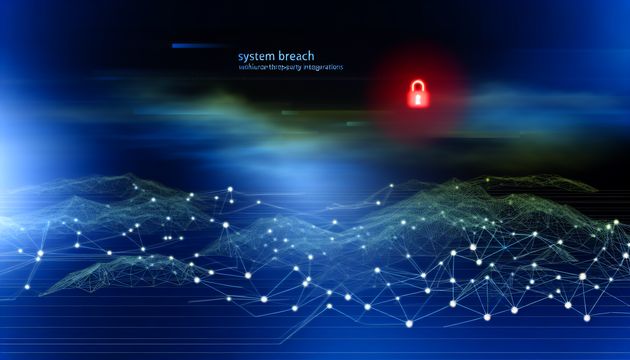
Understanding Phishing and Strategies for Protection
Phishing, a form of cybercrime that involves tricking individuals into divulging sensitive information, has evolved into a sophisticated threat that exploits human psychology and technological vulnerabilities. Initially characterized by simple email scams, phishing now encompasses a range of tactics, including social engineering, multi-vector attacks, and the use of advanced technologies like AI and machine learning. These developments have made phishing a pervasive threat, capable of bypassing traditional security measures and targeting individuals across various platforms, from email to mobile devices (Cofense 2023 Phishing Threat Report). The financial impact of phishing is staggering, with billions lost annually due to fraudulent transactions and data breaches. As phishing tactics become more sophisticated, the need for comprehensive security strategies becomes increasingly urgent. This article explores the evolution of phishing techniques, the impact of these attacks, and effective strategies for protection, drawing on recent research and expert insights to provide a detailed understanding of this critical cybersecurity challenge.
The Evolution of Phishing Techniques
Advanced Social Engineering Tactics
Phishing attacks have significantly evolved from basic email scams to highly sophisticated social engineering tactics. Modern phishing campaigns exploit human psychology by creating a sense of urgency, fear, or curiosity to manipulate victims into taking specific actions. For instance, attackers often impersonate trusted entities such as banks, government agencies, or employers to gain access to sensitive information. These tactics are increasingly effective due to their ability to bypass traditional security measures by targeting human vulnerabilities rather than technical systems.
Recent studies have shown a significant increase in the use of social engineering tactics in phishing attacks. Attackers are leveraging psychological triggers such as fear of account suspension, missed opportunities, or urgent security updates to deceive users. This trend underscores the importance of training individuals to recognize and respond appropriately to these manipulative strategies.
Multi-Vector Phishing Attacks
Phishing is no longer confined to email-based scams. Attackers are employing multi-vector approaches to target victims across various platforms, including SMS (smishing), voice calls (vishing), and QR codes (quishing). These methods allow attackers to reach a broader audience and exploit different communication channels to achieve their objectives.
For example, smishing attacks have become increasingly prevalent, with attackers sending fraudulent text messages that appear to be from legitimate sources. These messages often contain malicious links or request sensitive information. Similarly, vishing attacks involve phone calls from individuals impersonating trusted entities, such as tech support or financial institutions, to extract personal or financial details.
Quishing, a relatively new technique, involves embedding malicious QR codes in emails, posters, or other media. When scanned, these codes redirect users to phishing websites designed to steal credentials or install malware. The rise of quishing highlights the adaptability of attackers in leveraging emerging technologies to deceive victims.
Credential Theft and Phishing Kits
Credential theft remains one of the primary goals of phishing attacks. There has been a significant increase in credential phishing attacks, driven by the use of sophisticated phishing kits. These kits are pre-packaged tools that enable attackers to create convincing phishing websites and campaigns with minimal effort. They often mimic the login pages of popular services, such as email providers, social media platforms, and online banking portals, to trick users into entering their credentials.
Phishing kits are widely available on the dark web, making it easier for less experienced attackers to launch effective campaigns. Many of these kits include features such as real-time credential harvesting, anti-detection mechanisms, and the ability to bypass multi-factor authentication (MFA). The proliferation of these tools has contributed to the rapid escalation of credential theft attacks, posing a significant challenge to cybersecurity professionals.
Business Email Compromise (BEC) and Conversation Hijacking
Business Email Compromise (BEC) attacks have become increasingly targeted and sophisticated. These attacks involve impersonating high-ranking executives or trusted business partners to deceive employees into transferring funds or sharing sensitive information. BEC attacks often rely on extensive research and reconnaissance to craft convincing messages that align with the target’s context and relationships.
Conversation hijacking is another emerging trend in phishing. Attackers infiltrate email threads by compromising one of the participants’ accounts and then use the ongoing conversation to launch phishing attacks. This tactic leverages the trust established within the conversation to increase the likelihood of success. Conversation hijacking incidents have risen significantly, highlighting the need for advanced email security measures to detect and prevent such threats.
Zero-Day Exploits and Dynamic Phishing Techniques
Attackers are increasingly using zero-day exploits and dynamic phishing techniques to bypass traditional security measures. Zero-day exploits target vulnerabilities in software or systems that are unknown to the vendor, leaving no time for patches or updates to be deployed. These exploits are often used in conjunction with phishing campaigns to deliver malware or gain unauthorized access to systems.
Dynamic phishing techniques involve the use of adaptive and real-time methods to evade detection. For instance, attackers may use URL shorteners, legitimate webmail services, or trusted URL protection services to conceal malicious links in phishing emails. These techniques make it challenging for traditional security tools to identify and block phishing attempts.
The frequency of user exposure to phishing threats has increased significantly, with individuals encountering multiple threats per week. This trend underscores the limitations of static threat intelligence and signature-based detection methods, highlighting the need for more advanced and adaptive security solutions.
Emerging Threats in Decentralized Platforms
The rise of decentralized platforms, such as blockchain-based applications and cryptocurrencies, has introduced new opportunities for phishing attacks. Fraudulent schemes in these domains often involve fake investment opportunities or security alerts that prompt users to divulge private keys or credentials. The decentralized and irreversible nature of transactions in these platforms exacerbates the risk, as victims have little recourse once their assets are compromised.
Attackers are also targeting decentralized finance (DeFi) platforms and non-fungible token (NFT) marketplaces, exploiting the lack of standardized security measures and user awareness in these emerging ecosystems. As these platforms continue to grow in popularity, it is crucial to develop robust security protocols and educate users about the risks of phishing in decentralized environments.
Impact and Statistics of Phishing Attacks
Financial Impact of Phishing Attacks
Phishing attacks continue to inflict significant financial losses on individuals and organizations globally. In 2023, the FBI’s Internet Crime Complaint Center (IC3) reported that phishing-related scams resulted in over $1.7 billion in financial losses, a figure that highlights the devastating economic consequences of these attacks. These losses often stem from fraudulent transactions, theft of sensitive financial credentials, and the costs associated with mitigating breaches.
Additionally, organizations face indirect costs such as lost productivity, legal fees, and reputational damage. For example, businesses targeted by phishing attacks often experience a decline in consumer trust, which can lead to long-term revenue losses. According to the Anti-Phishing Working Group, phishing attempts have tripled since early 2020, correlating with the increased financial burden on victims.
Volume and Growth of Phishing Attacks
The scale of phishing attacks has grown exponentially in recent years. In the third quarter of 2024 alone, over 932,000 unique phishing sites were detected globally, marking a slight increase from the previous quarter. This surge represents a broader trend of escalating phishing activity, with a significant jump observed between Q2 and Q3 of 2020, where the number of phishing sites rose from 147,000 to 572,000.
Moreover, the volume of phishing emails has increased by an astounding 1,265% since the release of ChatGPT in November 2022. This growth underscores the evolving sophistication of phishing campaigns, as attackers leverage advanced technologies to enhance their tactics.
Human Error and Organizational Vulnerabilities
Human error remains a critical factor in the success of phishing attacks. In 2023, 74% of successful phishing incidents were partly attributed to mistakes made by individuals. These errors often involve clicking on malicious links, downloading infected attachments, or failing to recognize fraudulent communications.
Organizations are also grappling with vulnerabilities in their security training programs. A survey of security managers revealed that 91% lacked confidence in the effectiveness of traditional security awareness training. This highlights the need for more robust and adaptive training methods to mitigate human-related risks.
Industry-Specific Impact
Certain industries are disproportionately targeted by phishing attacks due to the nature of their operations and the value of their data. For instance, financial services, healthcare, and technology sectors are frequent targets because they handle sensitive customer information and financial transactions. In 2023, nearly 43% of successful attacks on organizations involved social engineering tactics, with 79% of these attacks executed through email, SMS, social networks, and messaging apps.
The consequences of these attacks vary by industry. For example, healthcare organizations often face regulatory penalties and patient trust issues following a breach, while financial institutions may suffer direct monetary losses and reputational harm.
Evolution of Phishing Tactics
Phishing tactics have evolved significantly, becoming more sophisticated and harder to detect. Attackers now employ techniques such as spear phishing, whaling, and phishing-as-a-service (PhaaS) to target specific individuals or organizations. Spear phishing involves highly personalized attacks, often based on prior knowledge of the victim, while whaling targets high-profile individuals like executives.
PhaaS has emerged as a concerning trend, enabling less-skilled attackers to purchase ready-made phishing kits and services. This development has lowered the barrier to entry for cybercriminals, contributing to the surge in phishing activity worldwide. Advanced technologies, such as AI and machine learning, are also being used to craft more convincing phishing emails and messages, further complicating detection efforts.
Consequences of Successful Phishing Attacks
The outcomes of successful phishing attacks can be severe and multifaceted. In 2023, 29% of organizations reported breaches of customer or client data, while 32% experienced ransomware infections initiated through phishing emails. Credential or account compromises were also common, affecting 27% of organizations.
These breaches often result in regulatory fines, legal actions, and loss of competitive advantage. For example, compromised credentials can lead to unauthorized access to proprietary information, enabling competitors or malicious actors to exploit the data. Furthermore, the reputational damage from a publicized breach can deter potential customers and investors, amplifying the long-term impact on the organization.
Geographic Trends and Targeting
Phishing attacks are not evenly distributed across the globe; certain regions and countries are more frequently targeted. This disparity often correlates with the economic development and digital infrastructure of a region. For instance, countries with high internet penetration rates and a significant online financial presence are more attractive targets for cybercriminals.
Mapping the global geography of phishing attacks reveals that developed nations, such as the United States and European countries, are frequent targets due to their wealth and reliance on digital systems. However, emerging economies are also increasingly targeted as cybercriminals exploit weaker cybersecurity measures in these regions.
Emerging Trends and Future Outlook
The landscape of phishing attacks is continually evolving, with new trends and techniques emerging. One notable trend is the use of AI-generated phishing emails, which are designed to bypass traditional detection methods. These emails often mimic the tone and style of legitimate communications, making them more convincing to recipients.
Another emerging trend is the targeting of mobile devices through SMS phishing (smishing) and malicious apps. As mobile usage continues to rise, attackers are increasingly focusing on exploiting vulnerabilities in mobile platforms. This shift underscores the need for comprehensive security measures that address both traditional and mobile phishing threats.
In conclusion, the impact and statistics of phishing attacks highlight the urgent need for enhanced prevention and mitigation strategies. By understanding the evolving tactics of cybercriminals and implementing robust security measures, individuals and organizations can better protect themselves from the pervasive threat of phishing.
Common Phishing Techniques and Tactics
Email Phishing Variants
Email phishing remains one of the most pervasive and evolving forms of phishing attacks, but its techniques have diversified significantly in recent years. While traditional email phishing involves sending generic fraudulent emails to a broad audience, newer variants have emerged that are more targeted and deceptive.
Clone Phishing
Clone phishing involves replicating legitimate emails previously sent to the victim, such as receipts, invoices, or notifications. Cybercriminals modify the original email by replacing legitimate links or attachments with malicious ones. This tactic exploits the trust recipients have in familiar communications, making it harder to detect. For example, a cloned email might appear to be a follow-up to a legitimate transaction, tricking the recipient into clicking a malicious link or downloading malware.
Business Email Compromise (BEC)
BEC attacks target specific employees within an organization, often those with access to sensitive financial or operational data. Attackers impersonate high-ranking executives or trusted vendors, requesting wire transfers or sensitive information. According to a recent report by the FBI, BEC attacks have surged due to the integration of AI, enabling attackers to craft highly convincing emails that mimic the tone and style of real executives.
Spear Phishing and Its Evolution
Spear phishing, a more targeted form of phishing, has grown increasingly sophisticated. Unlike traditional phishing, spear phishing focuses on specific individuals or organizations, leveraging personal information to increase credibility.
Social Media Exploitation
Attackers often gather information from social media platforms to personalize their phishing attempts. For instance, they may reference recent posts, connections, or events to tailor their messages. This tactic is particularly effective in professional networks like LinkedIn, where attackers can impersonate recruiters or colleagues to gain trust.
AI-Driven Personalization
The use of generative AI in spear phishing has made these attacks nearly indistinguishable from legitimate communications. AI algorithms analyze vast datasets, including social media activity, browsing history, and email patterns, to create personalized phishing messages. As highlighted by a recent article in Security Magazine, these messages are so convincing that even cybersecurity-trained individuals can fall victim.
Smishing and Vishing
Phishing tactics have expanded beyond email to include smishing (SMS phishing) and vishing (voice phishing). These methods exploit the growing reliance on mobile devices and the trust placed in voice communications.
Smishing Tactics
Smishing attacks involve sending fraudulent text messages that appear to come from trusted entities, such as banks, delivery services, or government agencies. These messages often include malicious links or request sensitive information. For example, a smishing message might claim to be from a courier service, asking the recipient to click a link to reschedule a delivery, which then leads to a phishing site.
Vishing Techniques
Vishing attacks use voice calls to deceive victims into revealing sensitive information. Attackers often impersonate customer service representatives, tech support, or even law enforcement. A common vishing scam involves fake calls from “bank representatives” claiming suspicious activity on the victim’s account, urging them to provide account details or transfer funds to a “secure” account.
Phishing Kits and Automation
The accessibility of phishing kits has lowered the barrier to entry for cybercriminals, enabling even novice attackers to launch sophisticated campaigns. These kits include pre-designed phishing templates, malicious scripts, and automation tools.
Phishing-as-a-Service (PhaaS)
Phishing-as-a-Service platforms provide subscription-based access to phishing tools, making it easier for attackers to scale their operations. These platforms often include customer support, updates, and analytics, allowing attackers to refine their tactics. According to a recent report by a cybersecurity firm, the rise of PhaaS has contributed to the increasing volume and sophistication of phishing attacks.
AI-Powered Automation
AI-powered phishing kits enable attackers to automate the creation and distribution of phishing campaigns. For instance, AI can generate convincing email content, design realistic phishing websites, and even simulate human-like interactions in real-time. This automation allows attackers to target thousands of victims simultaneously while maintaining a high level of personalization.
Advanced Tactics: Deepfake and Multi-Channel Phishing
As technology advances, phishing tactics have become more complex, incorporating deepfake technology and multi-channel strategies to deceive victims.
Deepfake Phishing
Deepfake technology uses AI to create realistic audio or video impersonations of individuals. In phishing attacks, deepfakes can be used to impersonate executives in video calls or voice messages, convincing employees to transfer funds or share sensitive information. For example, a deepfake video of a CEO instructing an employee to approve a payment can be highly persuasive.
Multi-Channel Phishing Campaigns
Multi-channel phishing involves using multiple communication channels, such as email, SMS, and social media, to increase the likelihood of success. For instance, an attacker might send an email with a malicious link, followed by a text message reinforcing the urgency of the email. This coordinated approach exploits the victim’s trust in consistent messaging across channels.
Credential Harvesting and Malware Delivery
Phishing attacks often aim to harvest credentials or deliver malware, with attackers employing various techniques to achieve their goals.
Credential Harvesting Techniques
Phishing websites are designed to mimic legitimate login pages, tricking victims into entering their credentials. Attackers often use URL spoofing, where the domain name closely resembles the legitimate site, to deceive victims. For example, a phishing site might use “paypa1.com” instead of “paypal.com.” According to a recent cybersecurity report, credential phishing incidents have surged, highlighting the growing effectiveness of these tactics.
Malware Delivery Methods
Phishing emails often include malicious attachments or links that download malware onto the victim’s device. Common malware types include ransomware, spyware, and keyloggers. For instance, a phishing email might claim to be an invoice, with the attachment containing ransomware that encrypts the victim’s files until a ransom is paid.
Countermeasures and Mitigation Strategies
To combat the evolving threat of phishing, organizations and individuals must adopt comprehensive security measures.
Multi-Factor Authentication (MFA)
MFA adds an extra layer of security by requiring multiple forms of verification, such as a password and a one-time code sent to a mobile device. This ensures that even if credentials are compromised, attackers cannot easily access accounts. A recent article by a leading cybersecurity firm emphasizes the importance of MFA in preventing unauthorized access.
Employee Training and Awareness
Regular training sessions can help employees recognize phishing attempts, such as suspicious emails or unusual requests. Simulated phishing exercises can also test and improve employees’ ability to identify scams. Organizations like Hook Security offer tools and resources for phishing awareness training.
Real-Time Threat Detection
AI-driven threat detection systems can identify and block phishing attempts in real-time. These systems analyze email content, URLs, and attachments for signs of phishing, providing instant protection. As noted by a recent article in HubSpot, AI-powered cybersecurity solutions are essential for staying ahead of evolving threats.
By understanding and addressing these advanced phishing techniques, individuals and organizations can better protect themselves from scams and mitigate the risks associated with phishing attacks.
Effective Strategies to Protect Against Phishing
Implementing Multi-Factor Authentication (MFA)
Multi-Factor Authentication (MFA) is a critical defense mechanism against phishing attacks. Unlike traditional password-only systems, MFA requires users to provide two or more verification factors to gain access to an account. This could include something the user knows (password), something the user has (a smartphone or security token), or something the user is (biometric verification such as fingerprints or facial recognition).
According to a recent Cybersecurity & Infrastructure Security Agency (CISA) report, enabling MFA can significantly reduce the risk of unauthorized access. This additional layer of security ensures that even if an attacker obtains a user’s credentials through phishing, they cannot access the account without the second factor. Organizations should enforce MFA across all employee accounts, particularly for email, cloud services, and remote access systems.
Continuous Security Awareness Training
Security awareness training is essential for equipping employees with the knowledge to identify and respond to phishing attempts. Unlike the existing content that discusses general awareness gaps, this section focuses on the importance of continuous and evolving training programs tailored to the latest phishing tactics.
Organizations should conduct regular phishing simulations to test employee responses and provide immediate feedback. For instance, a recent KnowBe4 report revealed that a significant percentage of employees still engage in risky behaviors, such as clicking on unknown links or sharing credentials. Training should address these behaviors by teaching employees to verify sender authenticity, scrutinize URLs, and avoid downloading unsolicited attachments.
Additionally, training programs should include updates on emerging threats, such as AI-generated phishing emails and smishing (SMS phishing), which have become increasingly prevalent. This ensures employees remain vigilant against evolving attack vectors.
Advanced Email Filtering and Threat Detection
Email remains the primary vector for phishing attacks, as highlighted in the Cofense 2023 Phishing Threat Report, which noted a significant increase in email-based threats. Advanced email filtering systems are essential to mitigate this risk.
Modern email security solutions leverage artificial intelligence (AI) and machine learning (ML) to identify and block phishing attempts in real-time. These systems analyze email metadata, content, and attachments to detect malicious intent. Features such as sandboxing allow suspicious attachments to be executed in a controlled environment, preventing malware from reaching the end user.
Organizations should also implement Domain-based Message Authentication, Reporting, and Conformance (DMARC) to prevent domain spoofing. By verifying the authenticity of email senders, DMARC reduces the likelihood of phishing emails reaching employees’ inboxes. According to a recent Valimail report, DMARC adoption can significantly decrease phishing success rates.
Behavioural Analytics and User Monitoring
Behavioural analytics tools play a crucial role in detecting phishing attempts by monitoring user activity for anomalies. Unlike static security measures, these tools continuously analyze user behavior to identify deviations from established patterns, such as unusual login locations, access times, or data transfer activities.
For example, if an employee suddenly downloads a large volume of sensitive files outside of normal working hours, the system can flag this as suspicious and trigger an automated response, such as account suspension or additional verification steps. This proactive approach helps mitigate the impact of successful phishing attacks.
Moreover, behavioural analytics can identify compromised accounts early, preventing attackers from escalating their access. These tools are particularly effective in detecting Business Email Compromise (BEC) attacks, where threat actors impersonate high-level executives to deceive employees into transferring funds or sharing sensitive information.
Strengthening Mobile and Messaging Security
Phishing is no longer confined to email; attackers increasingly target mobile devices and messaging platforms. The Lookout 2023 Mobile Phishing Report highlighted a notable rise in smishing and attacks on business collaboration tools.
To address this, organizations should implement mobile device management (MDM) solutions that enforce security policies, such as app whitelisting, data encryption, and remote wiping capabilities. Additionally, employees should be educated on the risks of clicking on links or downloading attachments from unknown sources on their mobile devices.
Messaging platforms, such as Slack and Microsoft Teams, should also be secured with end-to-end encryption and monitored for suspicious activity. AI-driven threat detection tools can analyze messages for signs of phishing, such as malicious links or requests for sensitive information.
Regular Software Updates and Patch Management
Outdated software is a common entry point for phishing attacks, as attackers exploit known vulnerabilities to gain access to systems. Organizations must establish a robust patch management process to ensure all software, including operating systems, applications, and plugins, is up to date.
According to a recent Perception Point report, zero-day vulnerabilities accounted for a significant portion of embedded malicious links observed in phishing attacks. Regular updates and patches mitigate this risk by addressing security flaws before attackers can exploit them.
Automated patch management tools can streamline this process, ensuring timely updates without disrupting business operations. Additionally, organizations should prioritize critical patches for software commonly targeted by attackers, such as web browsers and email clients.
Leveraging AI for Real-Time Threat Detection
AI-driven threat detection systems are becoming indispensable in the fight against phishing. These systems use natural language processing (NLP) and machine learning algorithms to identify phishing attempts based on linguistic patterns, tone, and context.
For instance, AI can detect subtle differences in email content, such as unusual phrasing or misspellings, that may indicate a phishing attempt. It can also analyze the sender’s email address and domain to identify spoofing attempts. By continuously learning from new threats, AI systems adapt to evolving phishing tactics, providing real-time protection.
Organizations should integrate AI-driven solutions into their existing security infrastructure to enhance detection capabilities. As noted in the SlashNext 2023 Phishing Intelligence Report, traditional security measures are often overwhelmed by the volume and sophistication of modern phishing attacks, making AI a critical component of a comprehensive defense strategy.
Incident Response and Recovery Planning
Despite robust preventive measures, no organization is immune to phishing attacks. Having a well-defined incident response and recovery plan is essential to minimize the impact of successful attacks.
The plan should include clear protocols for identifying and containing phishing incidents, such as isolating compromised accounts and systems. It should also outline communication strategies for notifying affected parties and regulatory authorities, as required by law.
Regular drills and simulations can help organizations test their incident response plans and identify areas for improvement. Additionally, backup and recovery systems should be in place to ensure critical data can be restored quickly in the event of a breach.
By combining preventive measures with a strong incident response framework, organizations can effectively mitigate the risks associated with phishing attacks.
Conclusion
In conclusion, the landscape of phishing attacks is rapidly evolving, driven by advancements in technology and the increasing sophistication of cybercriminals. The rise of multi-vector attacks, the use of AI for crafting convincing phishing messages, and the exploitation of emerging platforms like decentralized finance highlight the dynamic nature of this threat. Despite the growing complexity of phishing tactics, effective countermeasures exist. Implementing multi-factor authentication, enhancing security awareness training, and leveraging AI-driven threat detection are crucial steps in mitigating the risk of phishing attacks (Cybersecurity & Infrastructure Security Agency (CISA) report). Organizations must also prioritize regular software updates and develop robust incident response plans to minimize the impact of successful attacks. By adopting a proactive and comprehensive approach to cybersecurity, individuals and organizations can better protect themselves against the pervasive threat of phishing, safeguarding sensitive information and maintaining trust in digital interactions.



